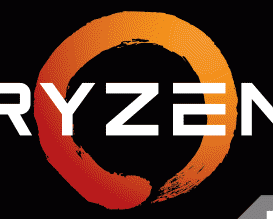A QUICK NOTE ON THE RYZEN 7700 ADOPTION PROCESS

Initially, I decided to install Windows Server 2008 R2, attracted by the opportunity
to have a server-class operating system with increased I/O throughput in the works.
But almost immediately i ran into compatibility problems [no surprise here] with my existing software.
Some programs refuse to run because of artificial restrictions [you know licensing mambo-jambo stuff],
some of which depend on components that are not present in Windows Server.
It’s sort of possible to work, but you almost always run into little glitches here and there,
even after converting it to a [workstation]
.
The new glitch with the latest version I’m running into is that it can’t enable the Aero interface anymore.
In the end of the day, it becomes not a job but a struggle with the problems mentioned above.
That is why I am definitely not going to waste my time on this, because I know it will be an endless train of compromises and fixes,
with no 100% solutions [relying on my previous experiences].
One more important thing to mention.
When installing the latest unsigned video card drivers, you may encounter error 52.
A yellow exclamation mark in the hardware control panel will warn you about that.
To fix this, run following commands at the console with administrative privileges:
set loadoptions DISABLE_INTEGRITY_CHECKS
bcdedit -set TESTSIGNING ON
- Reboot computer
- Reinstall video driver
- Tada!
Ok, and now some subjective ranting about CPU performance.
One of the most known notoriously bad features of AM5 platform is a VERY LONG BOOT TIME and atrocious reaction
to any power-related events, like standby, hibernation and so on.
To resolve this update BIOS to the latest version.
New versions of BIOS come out almost every month at
the rate of mating rabbits, but that’s no wonder considering the fact how immature the platform is.
Anyway, the setting you are looking for is MEMORY CONTEXT RESTORE. Just enable it.
There are some reports that it can make the system unstable, but that is not my case.
The second thing to mention is the not so effective use of CPU capabilities. Don’t get me wrong, performance is more than fine.
It is more than twice as fast as the Xeon E5-2696v in single-threaded operations and 20-30% faster in light multi-threaded workloads.
In really deep multi-threaded scenarios the Ryzen 7700 easily matches the E5-2696v4.
To give the CPU an additional boost increase permitted wattage.
I increased the power consumption from 65Watt [default value] to 95Watt.
The third setting to remember is memory related: just turn on XMP profile of your memory modules.
Ryzen works just fine with 6400Mhz frequency without any problems whatsoever.
The overall amount of BIOS settings is staggering and quite overwhelming for my taste,
i have just tweaked a few things to my preference here and there.
[Noctua DH-D15 SE AM4]
cooler handles the Ryzen 7700 with ease with a single fan installed.
I will add an extra fan when I upgrade to something like 10950x/11950x in the distant future.
That’s it for today, i am outta here!
![ME, READING YER MAILS [HUMAN TRAFFIC SAMPLE]](/img/brazil.png)



